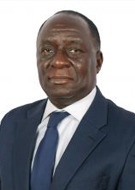WHO Issues Global Guidance for Chest Imaging in COVID-19
International experts fast-track guidelines to aid radiologists during pandemic





Because COVID-19 can manifest as respiratory symptoms, chest imaging has been part of the diagnostic workup of symptomatic patients since the novel coronavirus that causes the disease emerged in late 2019.
Chest imaging is also used to help manage patients already diagnosed with COVID-19 by complementing clinical evaluation and laboratory parameters, for example.
Despite its relatively widespread use during the pandemic, a recent survey conducted by the International Society of Radiology and the European Society of Radiology found important variations in imaging practices related to COVID-19. It was clear that guidance from the World Health Organization (WHO) was necessary.
“Several WHO Member States from around the world requested WHO guidance on the role of chest imaging in patients with suspected or confirmed COVID-19,” said Maria del Rosario Perez, MD, a scientist in the WHO Radiation and Health Unit. “This confirmed the need for global guidance on the topic.”
To answer this need, WHO developed a rapid advice guide on using chest radiography, chest CT and lung ultrasound in diagnosing and managing COVID-19. An international group composed by experts from multiple disciplines and different regions of the world developed the WHO guidelines and authored the recent Radiology article, “Use of Chest Imaging in the Diagnosis and Management of COVID-19: A WHO Rapid Advice Guide,” discussing the process and results.
A Rapid Response to an Urgent Need
While standard WHO guidelines are typically developed between six and 12 months, rapid advice guides such as the WHO COVID-19 imaging guidelines are fast-tracked in less than three months.
“Because of the urgency of the situation, the development, approval, production and publication processes were accelerated,” said lead author Elie Akl, MD, a professor of medicine in the Department of Internal Medicine at the American University of Beirut, Lebanon, who co-chaired the WHO guidelines development group. “These rapid advice guidelines were supported by ‘rapid reviews’ of the evidence. The rapidity is achieved through a combination of engaging a larger than usual number of reviewers and of using shortcuts in the process that are supposed to not affect is quality.”
The guidelines were developed in strict accordance with WHO principles, said Michael G. Kawooya, MD, Director of the Ernest Cook Ultrasound Research and Education Institute (ECUREI) and Professor Emeritus Makerere University in Kampala, Uganda, and a member of the WHO guidelines development group.
“From the concept to final draft, the whole exercise, which was conducted online without any face-to-face interactions, took approximately nine weeks,” Dr. Kawooya said. “It was transparent, explicit, evidence-based, systematic and comprehensive.”
Seven Recommendations for Chest Imaging
The rapid advice guide on chest imaging offers seven recommendations for patients with suspected or confirmed COVID-19, covering different levels of severity. Experts stressed the conditional nature of the rapid advice guidelines.
“Because the pandemic is still new, the scientific evidence has not yet reached its full potential,” Dr. Kawooya said. “Thus, the recommendations in this particular rapid guidance are all conditional.”
The guidelines are relevant to the entire care pathway — from hospital entry to home discharge.
“Although the guide is primarily intended to be used by health care professionals involved in the management of COVID-19, it may also be useful to hospital managers, policy makers, health authorities and anyone else working to develop specific national standards relevant to containing the pandemic,” Dr. del Rosario Perez said.
The guide makes recommendations on imaging choices, provides guidance on how best to undertake imaging in different circumstances, considers implementation for different resource settings, and identifies knowledge gaps meriting further research. It includes an annex on infection prevention and control for each imaging modality and a summary of the scientific evidence used to develop the recommendations.
Each recommendation was developed in response to a specific clinical scenario. One example: “In hospitalized COVID-19 patients, can chest imaging influence clinical decision-making?” The recommendations are listed as “conditional,” indicating that guidance was based on a low level of scientific evidence. Remarks are provided to indicate the circumstances under which patients would be likely to benefit from chest imaging.
The main takeaway of the guidelines is that chest imaging should be used under very specific conditions in diagnosis of COVID-19, including cases when reverse-transcription polymerase chain reaction (RT-PCR) testing is not available or when results are delayed, Dr. Akl said.
“It should also be used when initial RT-PCR testing is negative, but there is high clinical suspicion of COVID-19,” Dr. Akl said. “Unfortunately, there is currently insufficient evidence to recommend the use of one imaging modality over another, so local expertise and availability of resources play an important role in this choice.”
Guidelines Based on Wide Range of Factors
While the WHO guidelines for chest imaging were based on factors like sensitivity and specificity, the authors also considered acceptability, feasibility, accessibility, equity and costs. As a result, the guide can serve as an aid in developing policies at the local and national levels.
“Understanding the factors considered by health care professionals in the decision-making process when caring for COVID-19 confirmed or suspected patients in different environments, including in under-resourced areas, is very helpful,” said Jane Ko, MD, a Professor of Radiology at NYU Langone Health, New York City, and a member of the RSNA COVID-19 Task Force, who served on the WHO guideline development group.
“These factors tend to be overlooked in other guidelines, but are of utmost importance to developing countries and thus need to be considered in a WHO guide,” said Guy Frija, MD, a professor emeritus of radiology and consultant at the imaging department of Paris Georges Pompidou European Hospital (GPEH), who chaired the WHO guidelines development group.
Radiologists are encouraged to use the WHO guidelines to advise clinicians on the most appropriate imaging examination for COVID-19 patients.
“Every examination should be justified. Radiologists can refer to these recommendations when vetting imaging examination requisitions, especially in low-resourced settings where contextual factors such as acceptability, feasibility, accessibility and equity should be particularly considered,” Dr. Kawooya said.
The guide is meant to be a living document that will be regularly updated to reflect new evidence.
“There are several research avenues that remain open, including the role of lung ultrasound, the use of artificial intelligence, and the role of imaging for COVID-19 pulmonary sequelae evaluation,” Dr. Frija said.
For More Information
Access the Radiology article, “Use of Chest Imaging in the Diagnosis and Management of COVID-19: A WHO Rapid Advice Guide.”
Access the RSNA News story, “Chest X-Rays Show More Severe COVID-19 in Non-White Patients.”